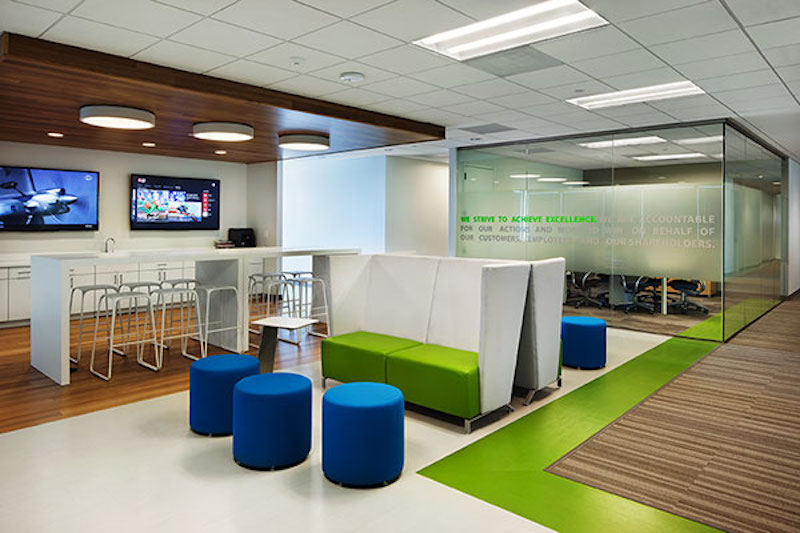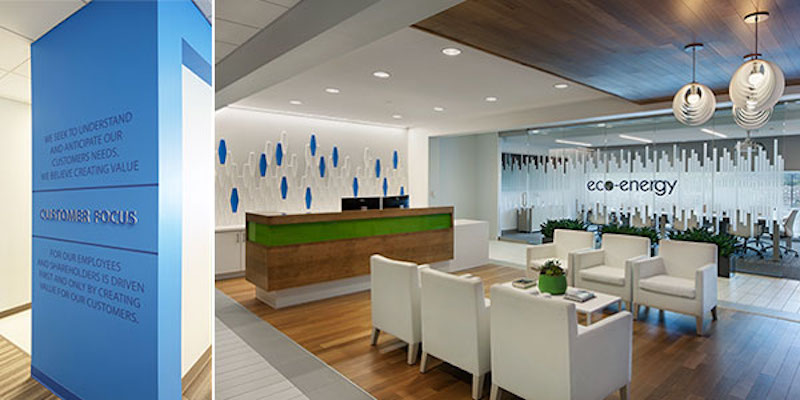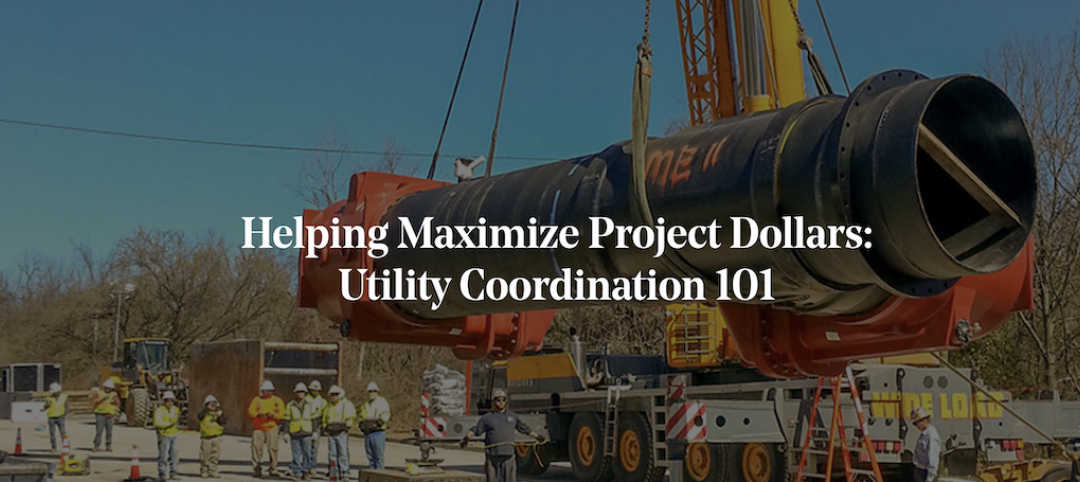What is a brand? In my opinion, one of the best definitions is: a collection of perceptions and emotions in the mind of a customer or user that add value and enable choices. Strong brands are consistent, they know their audience, they differentiate with memorable experiences, and they inspire positive emotions among their users or audiences. A brand may be experienced in a variety of media and forms. These branded “touchpoints” can include a website, a piece of printed collateral, a television commercial, an event or experience, or any other form of communication. These are all relevant and practical methods of connecting to target audiences, but have you considered using your built environment as a branded touchpoint?

A branded environment has the potential to create a long-lasting impression for your intended audiences. Just think about Cinderella’s castle at Disney World. The thought of the tall, whimsical building probably makes you feel happy and excited, even child-like. In addition to the physical architecture, the sounds, smells, landscaping, and friendly staff at the castle add to the experience. The physical experience of the castle at Disney is strongly associated with positive emotions, and as a result it has become an iconic and highly effective representation of the Disney brand. Therefore, the same positive feelings are experienced across a variety Disney branded touchpoints.
Obviously, not all clients will need a castle to establish a successful branded environment. But the Disney castle can help us learn how to use our environment as a tool to connect to audiences by capturing their emotions and being memorable. A branded environment matters because it differentiates you from your competition, and corporate entities in particular have a tremendous opportunity to make an impact. No matter if it’s a retail store, hotel, restaurant, company headquarters or local office, branded environments combine architecture, interior design, graphic design, technology and features to create a holistic user experience.

The experience begins as guest first arrive at the campus or building and is carried throughout the facility. In fact, this is illustrated in a recent project: the GS&P-designed Eco-Energy headquarters. We worked to create a space that truly reinforces their brand and reflects their corporate mission and core values—from the big-picture layout and aesthetic down to the smallest decorative details. Every elements helps to immerse employees, customers and guests into the Eco-Energy culture.

By making your space more memorable, branded environments help sell or promote your products or services. Organizations spend many hours and dollars on so many different kinds of advertising but too often neglect in-person opportunities to maintain and grow a positive reputation. Why leave your company’s headquarters with blank walls and bland spaces? Why miss the chance to reinforce your brand to visitors and employees in the lobby of your office? Why not tell the story of your organization with design and aesthetics while generating the same connection created from other branded touchpoints and forms of communication?
It’s also worth pointing out that branded environments can be very effective in attracting and retaining top talent for your company. Especially in corporate offices, employees place a lot of value on the character of the space they work within. Introducing inspiring and energizing visuals that communicate your brand helps staff to feel that they are part of a meaningful mission.
As the leader of GS&P’s Branded Environments practice, I work hard every day to elevate space and place for our clients using design. Achieving success means working seamlessly across markets and disciplines, as the work of our architects, interiors designers, engineers, planners and the like all play an important role in creating a positive, memorable experience in any type of space. Done the right way, branded environments can tell your story, communicate your company’s DNA and help sell and promote your products and image to both customers and staff. Creating an impactful branded experience is why branded environments matter.
More from Author
Gresham Smith | Oct 16, 2024
How AI can augment the design visualization process
Blog author Tim Beecken, AIA, uses the design of an airport as a case-study for AI’s potential in design visualizations.
Gresham Smith | Aug 17, 2023
How to design for adaptive reuse: Don’t reinvent the wheel
Gresham Smith demonstrates the opportunities of adaptive reuse, specifically reusing empty big-box retail and malls, many of which sit unused or underutilized across the country.
Gresham Smith | May 24, 2023
Designing spaces that promote enrollment
Alyson Mandeville, Higher Education Practice Leader, argues that colleges and universities need to shift their business model—with the help of designers.
Gresham Smith | Apr 24, 2023
Smart savings: Commissioning for the hybrid workplace
Joe Crowe, Senior Mechanical Engineer, Gresham Smith, shares smart savings tips for facility managers and building owners of hybrid workplaces.
Gresham Smith | Mar 20, 2023
3 ways prefabrication doubles as a sustainability strategy
Corie Baker, AIA, shares three modular Gresham Smith projects that found sustainability benefits from the use of prefabrication.
Gresham Smith | Jan 19, 2023
Maximizing access for everyone: A closer look at universal design in healthcare facilities
Maria Sanchez, Interior Designer at Gresham Smith, shares how universal design bolsters empathy and equity in healthcare facilities.
Gresham Smith | Dec 20, 2022
Designing for a first-in-the-world proton therapy cancer treatment system
Gresham Smith begins designing four proton therapy vaults for a Flint, Mich., medical center.
Gresham Smith | Nov 21, 2022
An inside look at the airport industry's plan to develop a digital twin guidebook
Zoë Fisher, AIA explores how design strategies are changing the way we deliver and design projects in the post-pandemic world.
Gresham Smith | Feb 13, 2022
Helping maximize project dollars: Utility coordination 101
In this post, I take a look at the utility coordination services our Transportation group offers to our clients in an attempt to minimize delays and avoid unforeseen costs.
Gresham Smith | May 7, 2021
Private practice: Designing healthcare spaces that promote patient privacy
If a facility violates HIPAA rules, the penalty can be costly to both their reputation and wallet, with fines up to $250,000 depending on the severity.
















